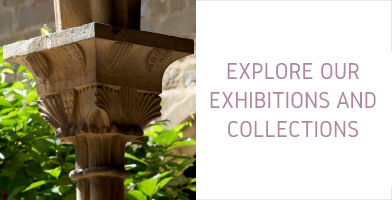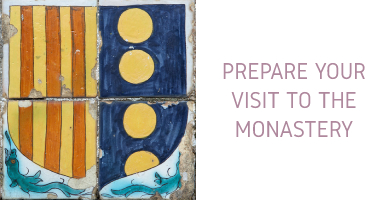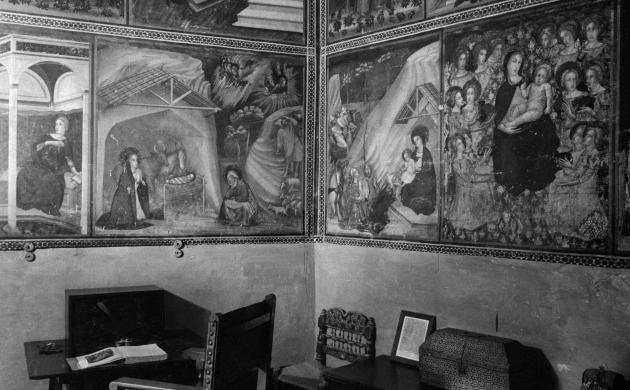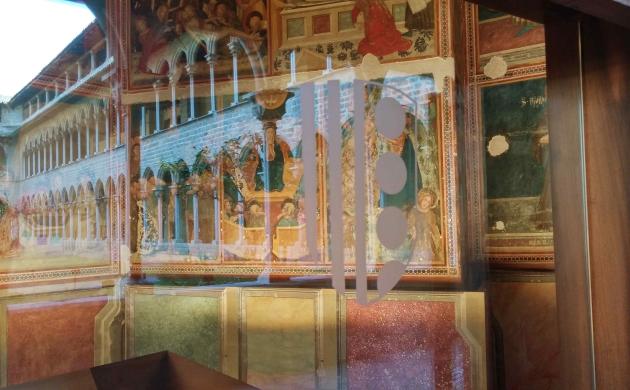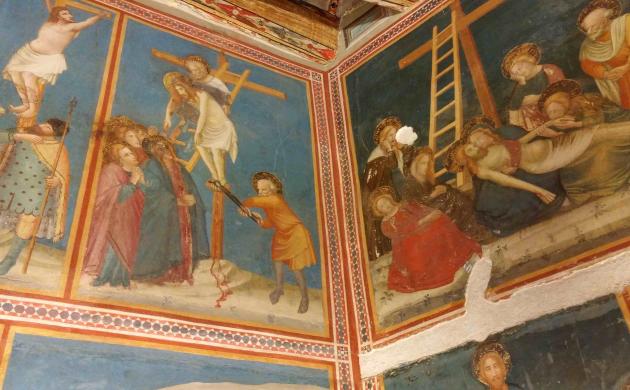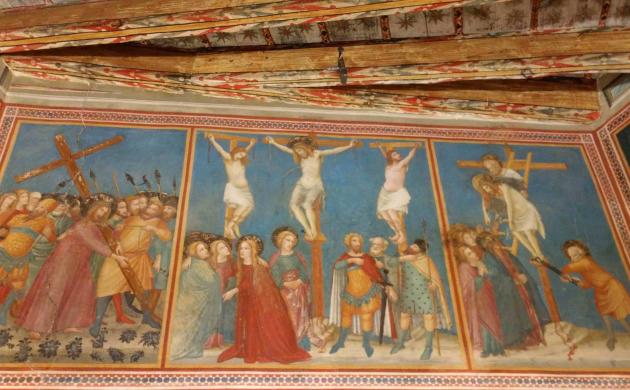
El blog del museu
Títol
Re-opening of St Michael’s Chapel
Created date
Introducció
The chapel of St. Michael reopens after 10 years closed to the public to witness one of the jewels of Catalan Gothic art.
On 3 March, at the Royal Monastery of St Mary of Pedralbes, St Michael’s Chapel was reopened to the public after ten years of restoration and research work, thereby recovering an work of art of the first order, comparable to the contemporaneous achievements of some of the great Italian painters from the late Middle Ages, such as Giotto, Taddeo Gaddi, Duccio de Buonisegna and the Lorenzetti brothers. The study of the murals has made them a world reference as regards our knowledge of the pictorial techniques of early Renaissance Humanism and its introduction into the Iberian Peninsula.
The murals in the chapel were fruit of a commission given to the painter Ferrer Bassa – though his authorship is not exempt of controversy – by the abbess Francesca ça Portella, who wanted to make this space her private cell. The abbess’s express wish, as recorded in the original contract, was that the work should be painted “de bones colors ab oli” (in good colours with oil), which denotes her desire to produce a relevant work, since for a hundred years oil had been the technique used for murals commissioned by illustrious sponsors.
After ten years of study by a team of over sixty specialists, and with a budget of €175,000 (of which €30,000 came from sponsorship promoted by the Verkami platform), the restoration work revealed important deficiencies in the preparation of the base coats and their state of conservation, as well as damage to a part of the murals caused by the old grooves cut deeply into the wall to secure a piece of furniture. While not all these deficiencies are noticeable at first sight, the deterioration of the pigments certainly is, because although the original contract specified the use of fine gold, the artist employed colradura, varnished silver that produces the same effect. However, as the varnish cracked over the years, the oxidation of the silver turned the original rich gold hues black. It was necessary to take measures to prevent further degradation.
During the restoration the plaster, resins and glues applied in earlier repair work were removed from all the walls before bonding the different undercoats together and then fixing them to the wall by injecting liquid mortar. Nanocal particles were used to fix peeling paint back onto the walls and the wooden beams, and to clean the different layers, agar-agar, a jelly-like substance obtained from certain marine algae. Bare patches were repaired using the rigatino inpainting technique to unify the surface chromatically: this consists of the application of thin coloured lines that blend in visually with the original when observed from a distance.
Thanks to this process, the panel of the Triumph of the Virgin has recuperated its chromatic value, the highlights being the blue achieved with azurite pigment and the colourful imitation marble on the lower part, hidden until recently under several layers of paint. This red marble flanks an evocation of the altar, a lost feature of the mural, signs of which were found during the restoration process.
The contrast between the restored parts of the group of pictures in the chapel and those areas as yet untouched is significant enough to prompt a reflection on the need for conservation of this heritage, which must transcend frontiers to gain the importance it deserves.
Enric M. Puga







